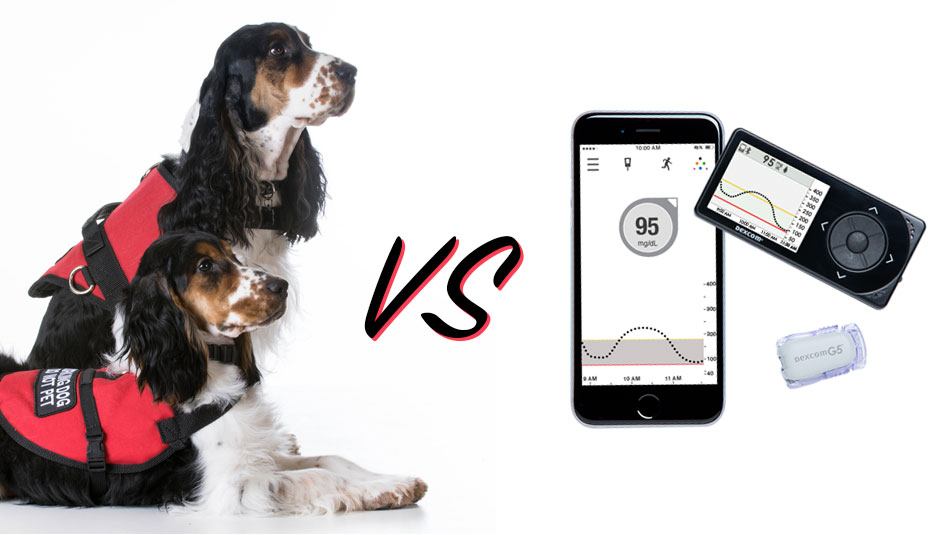Study Pits Diabetes Alert Dogs Against CGMs

Everyone loves a heartwarming story of a dog, and the Type 1 diabetes community especially loves heartwarming stories of dogs which can detect hypoglycemia. But recently a group of researchers have dared to ask whether dogs are the best tool for detecting lows.
In recent years, there has been ample anecdotal evidence that well-trained diabetes alert dogs can detect lows, but little study has been done to compare whether trained dogs can outperform other diabetes self-care tools, like continuous glucose monitors (CGMs), at this task.
Enter Dr. Evan Los, a pediatric endocrinology fellow at Oregon Health & Science University, Portland. Dr. Los risked the wrath of dog-lovers everywhere by pitting diabetes alert dogs head to head against continuous glucose monitors for the battle of hypo-detecting supremacy. According to a Medscape Multispecialty report, he found that technology left the dogs in the dust.
The study asked eight people with Type 1 who had diabetes alert dogs to detect lows using three methods – self-diagnosis of hypoglycemia, trained dogs, and CGMs. They were told to record whichever method of the three picked up the low first. Once the results were analyzed, researchers found that CGMs picked up a low first about 70 percent of the time. Dogs? Just 19 percent of the time. Also, diabetes alert dogs had an added drawback in that they barked for lows more often than warranted, a habit that led to a handful of false alarms.
The study’s results may at first sound dire for our canine friends, but really nothing has been definitively proven. This was a miniscule study of just eight people, which is way too small of a sample size to draw a conclusion. Also, Dr. Los pointed out that since there is no one standard of training diabetes alert dogs, we may not be getting an apples to oranges comparison of the effectiveness of canines as a whole. If one dog in the group was shoddily trained or had a bad week, it could have blown the curve for the rest of the dogs. If anything, this study underlines that we don’t know enough yet about diabetes alert dogs to clinically prove their effectiveness, one way or another.
No one is saying we should ditch the dogs. Even Dr. Los concedes that diabetes alert dogs detect lows and provide companionship, and there are numerous studies that have established that service dogs can improve the health and quality of life of people with chronic conditions.
However, such findings do help underline the point that diabetes alert dogs are just one option for detecting lows, and a relatively new one at that. Every treatment option for Type 1 diabetes, be they pumps or pooches, has pros and cons, and there is no one-size-fits-all approach to good blood sugar control.
We can still cheer for dogs that save people with Type 1 from lows, but we just might also want to cheer for CGMs, even if algorithms are much less heartwarming.
Thanks for reading this Insulin Nation article. Want more Type 1 news? Subscribe here.
Have Type 2 diabetes or know someone who does? Try Type 2 Nation, our sister publication.







